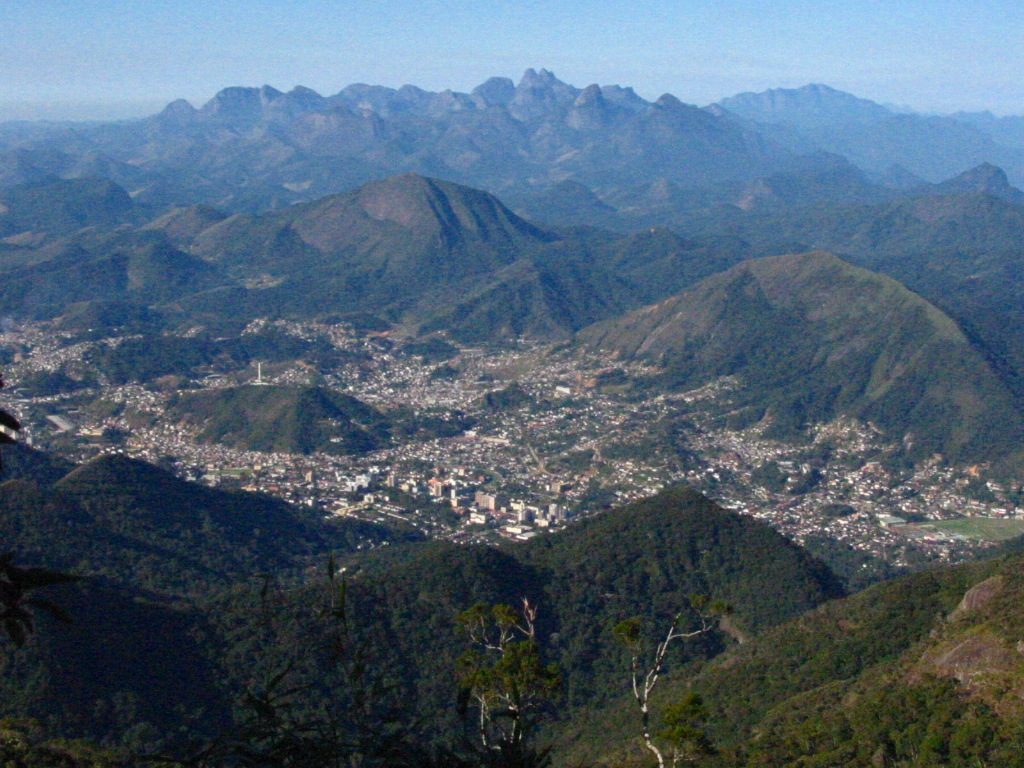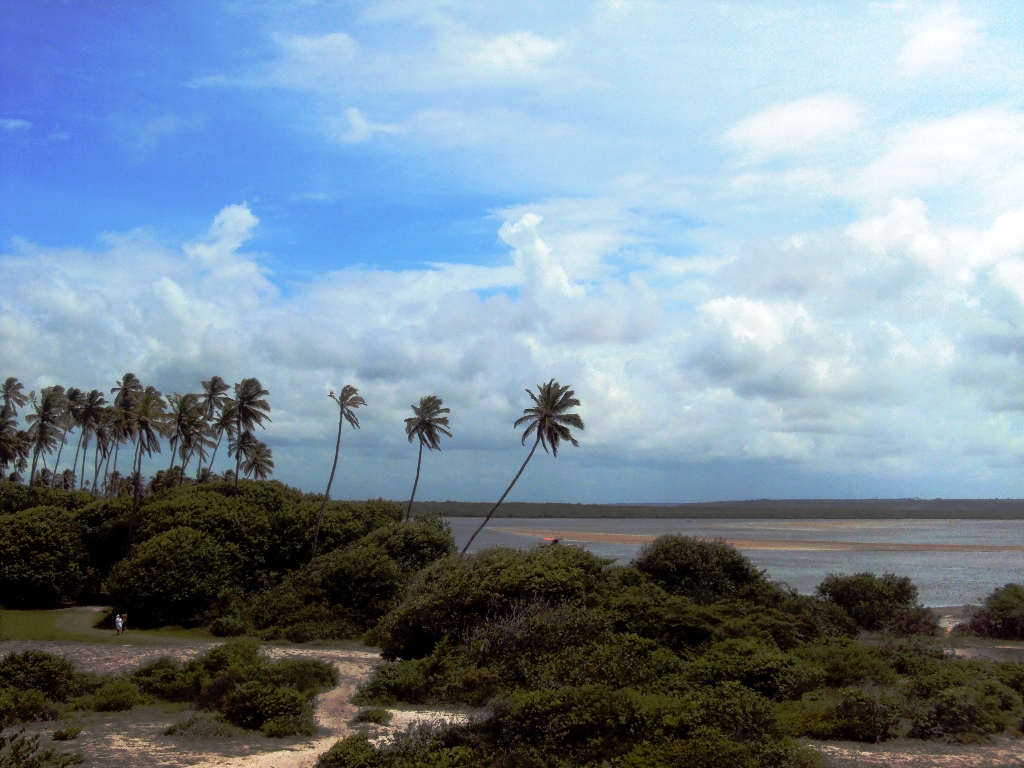|
Bacia Dos Frades Environmental Protection Area
The Bacia dos Frades Environmental Protection Area ( pt, Área de Proteção Ambiental Bacia dos Frades) is an environmental protection area in the state of Rio de Janeiro, Brazil. Location The Bacia dos Frades Environmental Protection Area (APA) is in the municipality of Teresópolis, Rio de Janeiro. It has an area of . History The Bacia dos Frades Environmental Protection Area was created by state law 1.755 of 27 November 1990. It had an area of . The APA was included in the Central Rio de Janeiro Atlantic Forest Mosaic, created in 2006. On 31 October 2013 state law 6.573 extinguished the Paraíso Ecological Station and the Floresta do Jacarandá Environmental Protection Area, and modified the Bacia dos Frades Environmental Protection Area and the Três Picos State Park The Três Picos State Park ( pt, Parque Estadual dos Três Picos) is a state park in the state of Rio de Janeiro, Brazil. It preserves a large, mountainous region of Atlantic Forest. Location When created, t ... [...More Info...] [...Related Items...] OR: [Wikipedia] [Google] [Baidu] |
Teresópolis
Teresópolis (, , , ) is a Brazilian municipality located in the state of Rio de Janeiro, in a mountainous region known as ''Região Serrana''. The Serra dos Órgãos National Park lies partly within the city limits. The city is known as the home of the Brazil national football team, since it hosts CBF's training ground at Granja Comary. History Before the arrival of the Portuguese to the area where Teresópolis lies today, in the 16th century, it was inhabited by indigenous Brazilians. In the following centuries, Portuguese started buying land there. The region was also occupied by a quilombo, formed by runaway slaves coming from sugar cane plantations near Rio de Janeiro. In 1821, English citizen George March (born and raised in Portugal) established a farm there, which later became the most important settlement along the way between the court, in Rio de Janeiro, and the territory of Gerais (nowadays, the state of Minas Gerais), which led to the great improvement of agricult ... [...More Info...] [...Related Items...] OR: [Wikipedia] [Google] [Baidu] |
Environmental Protection Area (Brazil)
An environmental protection area ( pt, Área de proteção ambiental: APA) is a type of protected area in Brazil that has some degree of human occupation, but where the primary intent is environmental protection. Human occupation is monitored and controlled. An environmental protection area often contains other types of conservation units, which may be more strictly protected. Definition Environmental protection areas (APAs) are defined as part of the National System of Conservation Units regulated by Law 9985 of 18 July 2000. They are one of the types of sustainable use units, which try to reconcile conservation of nature with sustainable use of some natural resources. Other types of sustainable use unit are significant ecological interest area, national forest, extractive reserve, fauna reserve, sustainable development reserve, and natural heritage particular reserve. As of 1993 APAs were defined as areas where wildlife, genetic diversity and other natural resources were to be ... [...More Info...] [...Related Items...] OR: [Wikipedia] [Google] [Baidu] |
Rio De Janeiro (state)
Rio de Janeiro () is one of the 27 federative units of Brazil. It has the second largest economy of Brazil, with the largest being that of the state of São Paulo. The state, which has 8.2% of the Brazilian population, is responsible for 9.2% of the Brazilian GDP. The state of Rio de Janeiro is located within the Brazilian geopolitical region classified as the Southeast (assigned by IBGE). Rio de Janeiro shares borders with all the other states in the same Southeast macroregion: Minas Gerais ( N and NW), Espírito Santo ( NE) and São Paulo ( SW). It is bounded on the east and south by the South Atlantic Ocean. Rio de Janeiro has an area of . Its capital is the city of Rio de Janeiro, which was the capital of the Portuguese Colony of Brazil from 1763 to 1815, of the following United Kingdom of Portugal, Brazil and the Algarves from 1815 to 1822, and of later independent Brazil as a kingdom and republic from 1822 to 1960. The state's 22 largest cities are Rio de Janeiro, São G ... [...More Info...] [...Related Items...] OR: [Wikipedia] [Google] [Baidu] |
Central Rio De Janeiro Atlantic Forest Mosaic
The Central Rio de Janeiro Atlantic Forest Mosaic ( pt, Mosaico da Mata Atlântica Central Fluminense is a protected area mosaic in the state of Rio de Janeiro, Brazil. The mosaic is inland, to the east of the city of Rio de Janeiro. History A project to create three new protected area mosaics in the Serra do Mar Ecological Corridor began in December 2005, coordinated by the National Council of the Atlantic Forest Biosphere Reserve. These were the Bocaina Mosaic, Central Rio de Janeiro Atlantic Forest Mosaic and Mantiqueira Mosaic. Funding was provided by Conservation International, the Fund for the Global Environment Facility, the Government of Japan, the MacArthur Foundation and the World Bank. The Central Coastal Atlantic Forest Mosaic was recognized by the Ministry of the Environment on 11 December 2006. There were originally 22 conservation units in the mosaic. Others were added, and as of 2010 there were 29 units, with a total area of . The strategic plan was developed in 2 ... [...More Info...] [...Related Items...] OR: [Wikipedia] [Google] [Baidu] |
Paraíso Ecological Station
The Paraíso Ecological Station ( pt, Paraíso Ecological Station Paraíso) was an ecological station in the state of Rio de Janeiro, Brazil. In 2013, it was absorbed into the Três Picos State Park. Location The Paraíso Ecological Station (ESEC) was divided between the municipalities of Cachoeiras de Macacu (76.2%) and Guapimirim (23.8%). It had an area of . The area was considered representative of the Brazilian Atlantic Forest ecosystem. It contained examples of submontane and montane forest. History The Paraíso Ecological Station was created by state decree 9.803 of 12 March 1987. The objective was to conduct basic and applied research of the ecology, to protect the natural environment and to develop environmental education. It was expected that 90% of the area would be designated to permanent full preservation of the biota. In 1979, FEEMA, which was responsible for the ESEC, implemented the Primatology Center of Rio de Janeiro (CPRJ) to study Brazilian primates, breed th ... [...More Info...] [...Related Items...] OR: [Wikipedia] [Google] [Baidu] |
Floresta Do Jacarandá Environmental Protection Area
The Floresta do Jacarandá Environmental Protection Area ( pt, Área de Proteção Ambiental Floresta do Jacarandá) was an environmental protection area in the state of Rio de Janeiro, Brazil. Location The Floresta do Jacarandá Environmental Protection Area (APA) was in the municipality of Teresópolis, Rio de Janeiro. It had an area of . The area contains Atlantic Forest and sources of the Teresópolis water supply. A study published in 2001 noted that human activity had placed pressure on the environment in the W-NW of the reserve beside a slum along the BR-116 highway, and in the north where agricultural and tourist activities had expanded. The water was contaminated by fecal coliforms. History The Floresta do Jacarandá Environmental Protection Area was created by state decree 8.280 of 23 July 1985 as an Area of Environmental Protection and Permanent Preservation, with its forests, water sources and other forms of vegetation located in the place called Floresta do Jacarand ... [...More Info...] [...Related Items...] OR: [Wikipedia] [Google] [Baidu] |
Três Picos State Park
The Três Picos State Park ( pt, Parque Estadual dos Três Picos) is a state park in the state of Rio de Janeiro, Brazil. It preserves a large, mountainous region of Atlantic Forest. Location When created, the Três Picos State Park was divided between the municipalities of Cachoeiras de Macacu (48.92%), Guapimirim (4.21%), Nova Friburgo (19.26%), Silva Jardim (7.53%) and Teresópolis (20.08%) in the state of Rio de Janeiro. As of 2016 about two thirds of the area was in the municipality of Cachoeiras de Macacu. The park is named after the Três Picos (Three Peaks) mountains, which reach in altitude, and are considered to be the center of the Serra do Mar range. The peaks present over 100 routes of varying levels of difficulty to climbers. There are dozens of waterfalls of great beauty in Cachoeiras de Macacu. Environment The state park is the largest in Rio de Janeiro, and preserves a large portion of Atlantic Forest in excellent condition. The park has the greatest biodiversit ... [...More Info...] [...Related Items...] OR: [Wikipedia] [Google] [Baidu] |
Environmental Protection Areas Of Brazil
A biophysical environment is a biotic and abiotic surrounding of an organism or population, and consequently includes the factors that have an influence in their survival, development, and evolution. A biophysical environment can vary in scale from microscopic to global in extent. It can also be subdivided according to its attributes. Examples include the marine environment, the atmospheric environment and the terrestrial environment. The number of biophysical environments is countless, given that each living organism has its own environment. The term ''environment'' can refer to a singular global environment in relation to humanity, or a local biophysical environment, e.g. the UK's Environment Agency. Life-environment interaction All life that has survived must have adapted to the conditions of its environment. Temperature, light, humidity, soil nutrients, etc., all influence the species within an environment. However, life in turn modifies, in various forms, its conditions. S ... [...More Info...] [...Related Items...] OR: [Wikipedia] [Google] [Baidu] |
Protected Areas Of Rio De Janeiro (state)
Protection is any measure taken to guard a thing against damage caused by outside forces. Protection can be provided to physical objects, including organisms, to systems, and to intangible things like civil and political rights. Although the mechanisms for providing protection vary widely, the basic meaning of the term remains the same. This is illustrated by an explanation found in a manual on electrical wiring: Some kind of protection is a characteristic of all life, as living things have evolved at least some protective mechanisms to counter damaging environmental phenomena, such as ultraviolet light. Biological membranes such as bark on trees and skin on animals offer protection from various threats, with skin playing a key role in protecting organisms against pathogens and excessive water loss. Additional structures like scales and hair offer further protection from the elements and from predators, with some animals having features such as spines or camouflage servin ... [...More Info...] [...Related Items...] OR: [Wikipedia] [Google] [Baidu] |



